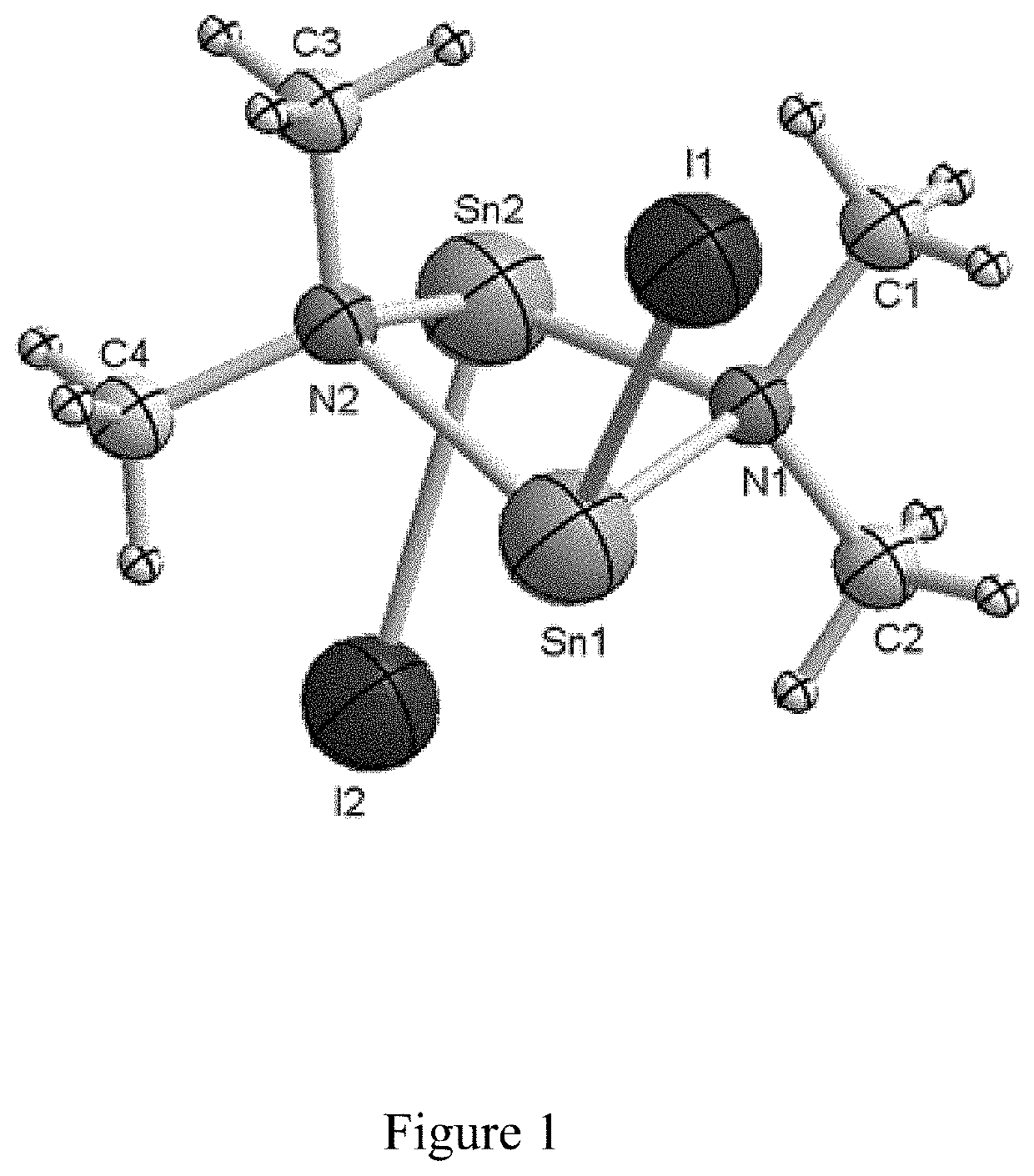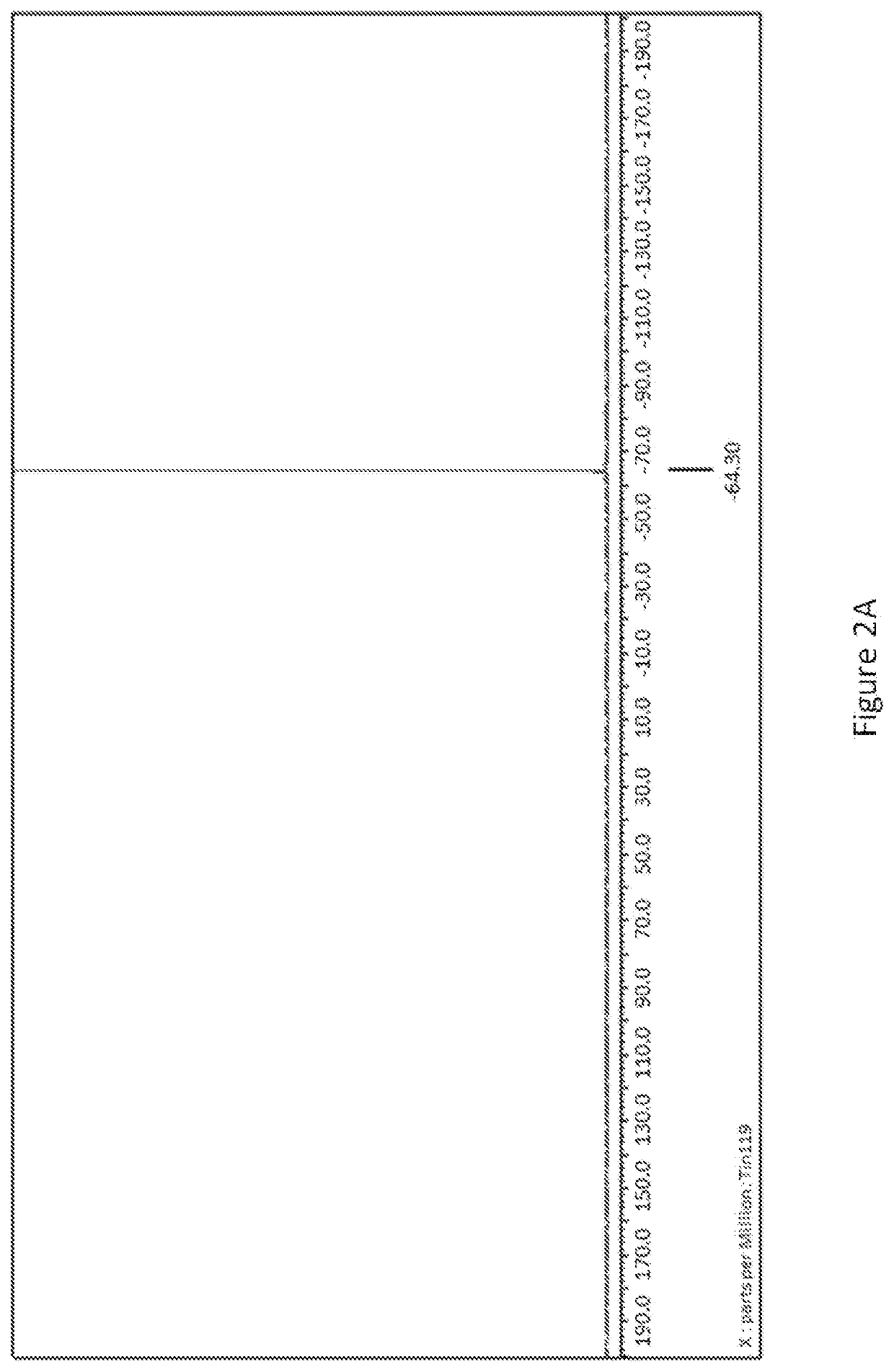Process for preparing organotin compounds
a technology of organotin and compound, which is applied in the field of organotin chemistry, can solve the problems of difficulty in providing high purity, and achieve the effect of high purity
- Summary
- Abstract
- Description
- Claims
- Application Information
AI Technical Summary
Benefits of technology
Problems solved by technology
Method used
Image
Examples
example 1
[0016]Isopropyl tris(dimethylamido) tin was prepared using the reaction sequence as described above and shown below:
[0017]Thus, a 3-neck 500 mL round bottom flask equipped with a magnetic stir bar was charged with 12.2 g lithium dimethylamide (239 mmol) and 250 mL hexanes. To this off-white slurry was added 21.6 g SnCl2 (113 mmol) and the resulting mixture was stirred at 60° C. for 72 hours. The resulting gray-green slurry was cooled to 23° C., giving a mixture including the compound of Formula (A).
[0018]Without further purification, the mixture was treated with 11.5 g 2-iodopropane (68.2 mmol). The reaction mixture was then heated to 60° C. for 18 hours. After the reaction mixture had cooled to 23° C., it was filtered through a coarse porosity fritted filter into a 500 mL flask, and the filter cake was washed with a 500 ml aliquot of anhydrous hexanes to give a light yellow clear solution. The solvent and other volatiles were then removed from the filtrates under reduced pressure, ...
example 2
[0021]F3CSn(NMe2)3 was prepared using the reaction sequence as described for Example 1. Specifically, [Sn(NMe2)2]2 (23.1 g, 55.6 mmol) was loaded into a 250 mL roundbottom flask equipped with a magnetic stir bar and dissolved in hexanes (125 mL). The flask was equipped with a cylinder of I—CF3 (25 g, 127.6 mmol) via a ¼ PTFE tube and 24 / 40 tubing adapter. Slowly, the I—CF3 was bubbled into the hexanes solution with stirring in the dark. After approximately 10 minutes, the reaction presented with a yellow precipitate. After approximately 30 minutes, all of the gas had been added, and the reaction presented with a flocculent yellow precipitate. The cylinder was then removed and massed, confirming that all of the desired I—CF3 had been added. The reaction was covered with foil and stirred at room temperature in the dark over the weekend. After this time, the reaction presented as a yellow / tan precipitate and was filtered over a disposable polyethylene filter frit and washed with hexane...
example 3
[0022]F3CCH2Sn(NMe2)3 was prepared using a procedure similar to that shown in Example 2. Specifically, [Sn(NMe2)2]2 (140 g, 336 mmol) was placed in a 1 L schlenk flask equipped with a magnetic stir bar and diluted with approximately 400 mL of hexanes to form a yellow mixture. I—CH2—CF3 was placed in a 250 mL additional funnel and attached to the schlenk flask. A slow addition rate was achieved (approximately 0.5-1 drop / sec), and the 1 L flask was covered with aluminum foil and stirred in the dark. After approximately 2.5 hrs, addition of the I—CH2CF3 was complete, and the resulting yellow mixture was stirred in the dark overnight at RT. After this time, the reaction presented with a bright yellow solid precipitate and red / orange solution. The precipitate was isolated by filtration through a disposable polyethylene filter frit into a 500 mL schlenk flask equipped with a magnetic stir bar. The filter cake was washed with hexanes (approximately 30 mL), and the resulting orange solution...
PUM
| Property | Measurement | Unit |
|---|---|---|
| temperature | aaaaa | aaaaa |
| temperature | aaaaa | aaaaa |
| temperature | aaaaa | aaaaa |
Abstract
Description
Claims
Application Information
 Login to view more
Login to view more - R&D Engineer
- R&D Manager
- IP Professional
- Industry Leading Data Capabilities
- Powerful AI technology
- Patent DNA Extraction
Browse by: Latest US Patents, China's latest patents, Technical Efficacy Thesaurus, Application Domain, Technology Topic.
© 2024 PatSnap. All rights reserved.Legal|Privacy policy|Modern Slavery Act Transparency Statement|Sitemap



